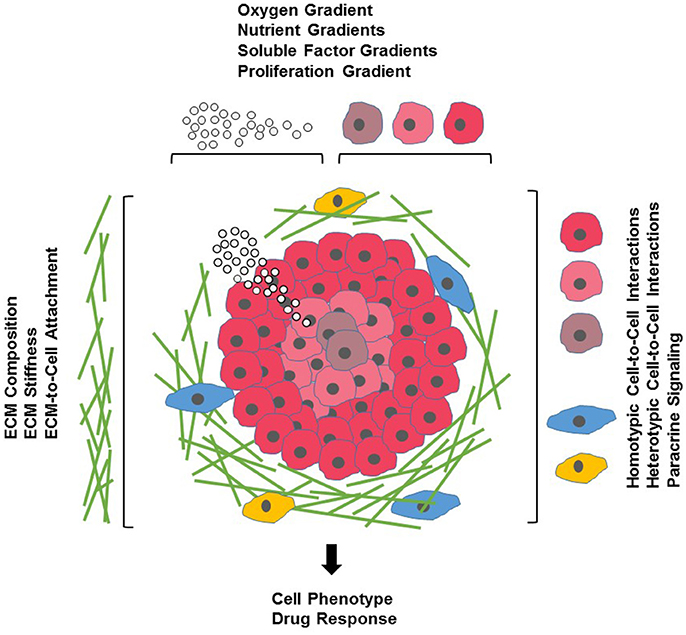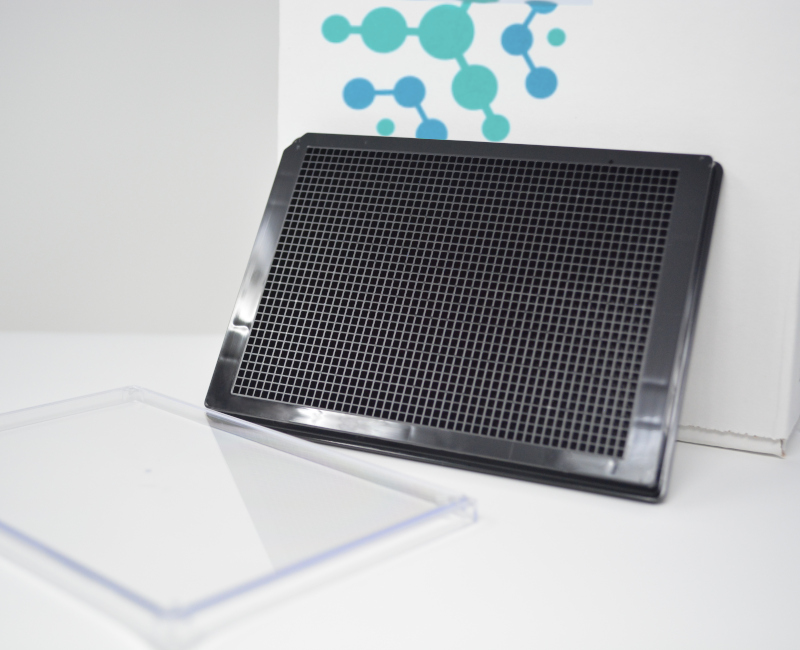
Scaffold free 3D cell culture models for high throughput screening
Scaffold free 3D cultures are cultivated in specialised cell repellant culture plates that causes cells to self aggregate. These involve hanging drop microplates, low adhesion plates with specialised polymer coating such as BIOFLOAT 96-well plates that encourages spheroid formation, or micro patterned plates that promotes the formation of microfluidic cell cultures. Multicellular spheroid cultures, are able to effectively recreate a physiologically relevant microenvironment with in-vivo like cell-cell interactions as well as cellECM interactions. Spheroid size can be modified by changing cell seeding density, and then be grown to a size that resembles the oxygen and nutrient gradients of tissues and tumours (1-3).
Scaffold free methods have becomes particularly useful in high throughput screens, due to its small scale, and easily modifiable platform. Patient specific tumour spheroids are found to retain their genome over time, enabling high throughout screens to provide relevant data for drug screens in a patient specific manner.
Mixed spheroid cultures of neuronal cells and glial cells are used to mimic drug response effects in CNS drug discovery processes. However spheroid cultures also comes with the need for meticulous optimisations of culture conditions, to produce uniform spheroids of a desired size, in order to ensure reproducibility and avoid insufficient nutrient supply and cell death (1-3).
Hanging drop microplates
Hanging drop microplates are a popular 3D cells culture technology, where cells self aggregate into spheroids without an attachment surface. This method utilises specialised plates with open bottomless wells, that promotes the formation of small droplet of media. The cells suspended, contains a peripheral layer with proliferating cells due to proximity to oxygen and nutrients, followed by an intermediate layer containing quiescent cells and an inner necrotic core, much like that found in tumour cells. Hanging drop method is also used in drug induced liver toxicity assays, and cardiac spheroids, with features closely resembling the in vivo microenvironment of cells, thus providing a reproducible and modifiable culture platform for high throughput screening (3).
Ultra low adhesion plates
Spheroid cultures using low attachment plates utilises specialised polymer coated plates with cell repellant surfaces the promotes the cells to self aggregate. The plates are round, tapered or V shaped bottomed. In contrast to hanging drop microplates, 96 well or 384 well low attachment plates such as BIOFLOAT plates, have an initial high volume capacity, thus making them well suited for multicellular cultures commonly used in tumour cells. The spheroids grow rapidly, and require little modifications to maintain viability. Due to its rapid production of spheroids, and reproducibility ultra low adhesion plates are an excellent choice for high throughput screens (3-4).
Magnetic levitation
Magnetic levitation involves the generation of spheroids by preloading the cells with nano particles and then caused to float towards an air/liquid interface within a low attachment plate, by applying an external magnetic field. This causes the cells to self aggregate and form spheroids. This method has gained ground in multicellular spheroid cultures from various tissues, to form multicellular stem cells for tissue engineering. Additionally recent advances in this technique has produced high throughput assay for toxicity screens making it a potentially effective platform for drug discovery (5).
References
- Mueller-Klieser, W. (1987). Multicellular spheroids. A review on cellular aggregates in cancer research. J. Cancer Res. Clin. Oncol. 113, 101–122.
- Cukierman, E., Pankov, R., Stevens, D. R., and Yamada, K. M. (2001). Taking cell-matrix adhesions to
the third dimension. Science 294, 1708–1712. - Langhans SA (2018) Three-Dimensional in Vitro Cell Culture Models in Drug Discovery and Drug
Repositioning. Front. Pharmacol. 9:6 - Ivascu, A., and Kubbies, M. (2006). Rapid generation of single-tumor spheroids for high-throughput
cell function and toxicity analysis. J. Biomol. Screen. 11, 922–932 - Souza, G. R., Molina, J. R., Raphael, R. M., Ozawa, M. G., Stark, D. J., Levin, C. S., et al. (2010).
Three-dimensional tissue culture based on magnetic cell levitation. Nat. Nanotechnol. 5, 291–296.


